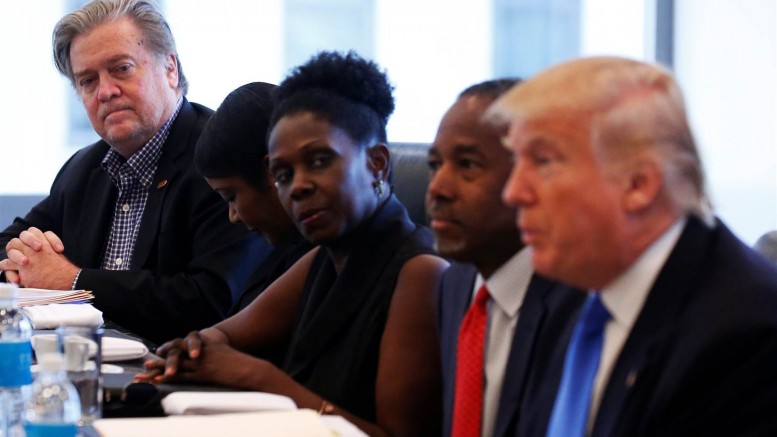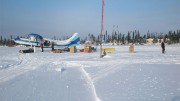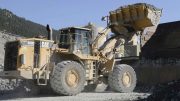Metal price prognosticators came out almost as badly as the pollsters in the wake of the U.S. presidential election, with most metal analysts predicting a post-election rise in gold prices, even as they put little emphasis on copper prices.
Instead, with Donald J. Trump taking the mantle of U.S. president-elect on Nov. 9, we all watched over the next two weeks as gold prices plummeted US$100 per oz. to today’s levels just above US$1,200 per oz., with spot copper prices flying to US$2.54 per lb., after languishing in the US$2.15 per lb. range this year.
Copper’s spike appears to reverse a downward trend that began in early 2012, when copper traded as high as US$3.90 per pound.

Six month chart of spot copper prices. Credit: Kitco.
The recent move up is supported by shrinking London Metal Exchange copper warehouse stock levels, which now stand at 250,000 tonnes, compared to 380,000 tonnes in October.
The shares of copper miners have shown little leverage to copper prices, however, with the Global X Copper Miners exchange-traded fund up almost 20% over the past month — not outpacing the copper price by much, and showing there’s concern among mining investors that the copper market isn’t out of the woods yet.
The renewed interest in copper comes from a wide expectation that the upcoming Trump administration will follow through on its promise to dramatically ramp up domestic infrastructure spending — a policy more than any other that would be perfectly suited to Trump’s background as a property developer.
Indeed, the Trump-Pence transition website at www.greatagain.gov says the new administration plans to spend US$550 billion on roads, highways, bridges, tunnels, airports and railways across the United States.
To get a glimpse at the fervour for infrastructure spending inside the Trump camp, look no further than the words of Steve Bannon, who has moved from being CEO of the Donald Trump presidential campaign to becoming his chief strategist and senior counsellor (Trump’s first appointment after his win).
“Like [Andrew] Jackson’s populism, we’re going to build an entirely new political movement,” Bannon told Hollywood Reporter in an interview. “It’s everything related to jobs. The conservatives are going to go crazy. I’m the guy pushing a trillion-dollar infrastructure plan. With negative interest rates throughout the world, it’s the greatest opportunity to rebuild everything. Shipyards, ironworks — get them all jacked up. We’re just going to throw it up against the wall and see if it sticks. It will be as exciting as the 1930s, greater than the Reagan revolution — conservatives, plus populists, in an economic nationalist movement.”
With the U.S. annual gross domestic product (GDP) growth rate limping along at around 1.5% for the past few years, Republican backers of the Trump infrastructure spending vision are already talking about driving the U.S. GDP growth rate to 5–6% in the early years of the presidency to restore middle-income jobs, particularly in areas such as the U.S. Rustbelt that were hard-hit over the last two decades by the outsourcing of manufacturing jobs to low-wage countries.
These plans for massive spending on infrastructure are being well-received on the other side of the aisle. Democratic U.S. Senator Chuck Schumer, the incoming Senate minority leader, told several media outlets that infrastructure spending, along with trade and closing the “carried interest” tax loophole, are three areas where Democrats can work with Trump on legislation. He emphasized that he didn’t want to see only federal tax incentives for new infrastructure, but direct spending by the government in the range of US$1 trillion.
Worldwide, the macroeconomics give more mixed signals for copper. The International Copper Study Group (ICSG) reported on Nov. 21 that the refined copper balance for the first eight months of 2016 indicates a production deficit of 91,000 tonnes, versus a production surplus of 10,000 tonnes for the same period of 2015.
But the ICSG estimates world mine production rose by 5.8% (730,000 tonnes) in the first eight months of 2016 compared to the same period of 2015, owing to a 45% rise in Peruvian copper production resulting from new and expanded capacity.
Another factor supporting copper prices is the decline in mine production from the world’s largest producer, Chile, where output is down 4% year-over-year in the first nine months of 2016, as mines get deeper and lower grade, and access to water becomes more constrained. Peru may also see lower-than-planned output in the fourth quarter, as local protests temporarily halted production at mines such as Las Bambas and Constancia.
RELATED STORIES:





Great editorial: Welcome back, Copper by my friend John Cumming
I enjoy getting your news and reading articles that interest me as an investor. It is easier for me to read the newspaper when I get it with my aging eyes. I still use both.
Thanks for the comment, Elaine, and for being a subscriber! John